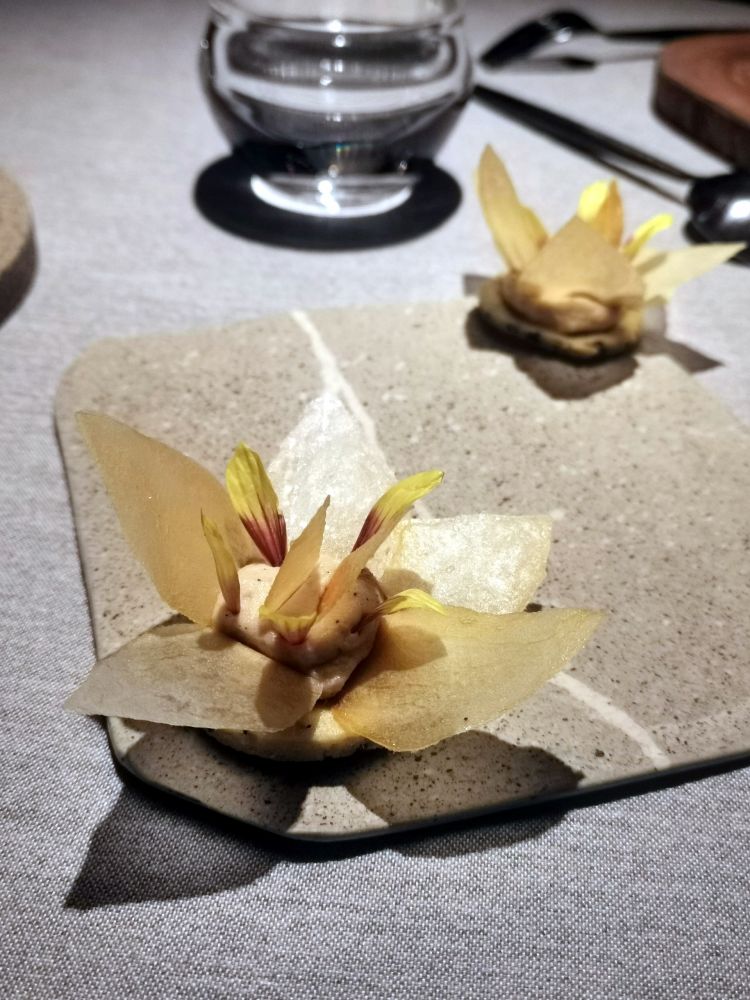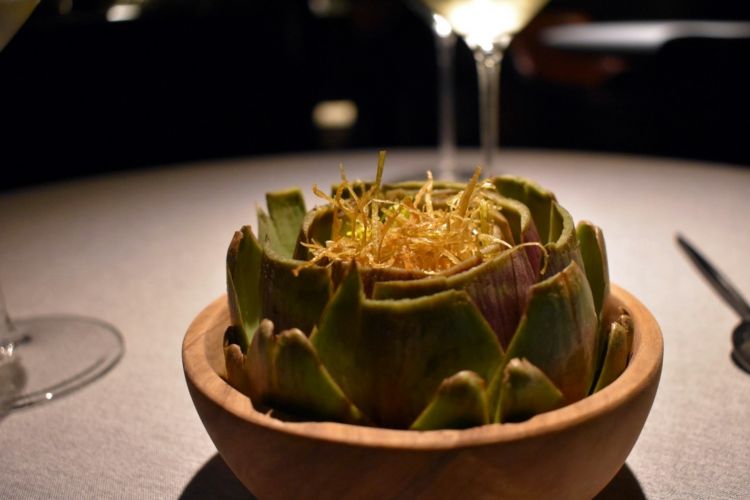There has been a lot of talk about Argentina, even in Italy, in recent weeks, due to the presidential elections and the rise of Javier Gerardo Milei as the new president, complete with chainsaw... But there is also something else to record: on the 24th of November, the Michelin guide made its debut in the country, the first Spanish-speaking nation on the Latin American continent to receive the stars of the Red Guide (it had already landed in Brazil but Portuguese is spoken there). This confirms the undeniable improvement that Argentina's dining offer has shown in recent years. There are 71 establishments mentioned in the Guide: among these, 6 restaurants are awarded a star (2 in Buenos Aires and 4 in Mendoza), 7 the green star for sustainability, 7 the Bib Gourmand price/quality recognition (all in Buenos Aires), and 57 are included in the Guide without further recognition (42 in Buenos Aires and 15 in Mendoza).
But there was one surprise. When the sixth of the six mono-stars between Mendoza and Buenos Aires (the only two cities considered for this edition) was announced, everyone present, after a moment's bewilderment, realised that the game was not over yet. One name was missing. The awarding of two Michelin stars to the Aramburu restaurant was accompanied by an ovation worthy of the Academy awards: no one doubted that Gonzalo Aramburu's restaurant would be one of the stars of the evening, but its entry in the Guide directly with two stars took everyone by surprise. However, it is indisputable that this restaurant plays in a different league than the other award-winning projects.
A historic fine dining restaurant in the city, after 16 years, Aramburu is now an undisputed classic of the Porteña scene. The only one left, incidentally, from the old school of fine dining establishments that stood out on the Buenos Aires scene in the early 2000s. This is why, jokingly, chef-patron Gonzalo Aramburu describes himself as 'the last of the Mohicans': of the other protagonists of the city's fine dining history - Chila, Tegui, El Baqueano, Tarquino... - his restaurant is the only one left. El Baqueano, for instance, has moved north, to Salta. The others have closed.
For Gonzalo, sixteen years of work and a path that is by no means trivial. He trained in Europe and the United States, in the kitchens of - among others - Daniel Boulud, Charly Trotter and Martín Berasategui. In 2006 he returned to Argentina and in 2007 he opened Aramburu (which immediately entered the Latin American 50Best) in the Bronx district of Constitución, the most problematic in the city, where taxis refused to take tourists and where customers had access to the restaurant directly from the internal car park of the structure, isolated from the outside by shutters that were always lowered and sealed. "It was what I could afford at the time," he recalls now with a smile, without denying the role that stage played in his journey.

Gonzalo Aramburu riceve le due stelle accanto a Gwendal Poullenec, capo delle 32 edizioni delle Guide Michelin
In 2019 he moved to the city's most elegant neighbourhood, Recoleta, with renovated spaces and facilities; in 2022, he joined the prestigious ranks of the
Relais&Châteaux association, the only one in the entire city and the only one in the country as a pure restaurant: the other six establishments that are part of this prestigious brand have five-star luxury hotels behind them. And finally: the latest accolade has not one but two Michelin stars shining above it - the only sign in Argentina, so far. We ask him: did you expect it? 'It is a dream come true, a great emotion that comes at a time of maturity in our offer, after many years during which we have always kept local products at the centre of our work,' the chef replied, just a few hours after the award.
The restaurant retains its original identity: 'Yes, there has been an evolution in the proposal, of course: we have been able to improve the structure of the restaurant, of the kitchen, that is, to invest. And we can now afford to propose a slightly more thought-out cuisine. But the identity is the same'. That is to say: the Argentinean product declined through the vegetal, marine and terrestrial world and marked by seasonality, interpreted by Gonzalo's flair and brought on stage by a service - swift and pleasant - that, in about two hours, proposes from 18 to 20 preparations (you might find indicated, in some presentations, that Aramburu's tasting menu consists of 18 to 20 courses: this is not so, of course. It is 18 to 20 tastings, some 20 very enjoyable recipes served in a very pleasant and spontaneous way).

The private room next to the wine cellar
The description of the dishes in the dining room is essential: each tasting is narrated through a presentation that barely mentions the ingredients; no explanations of cooking techniques, no poetry or storytelling: 'This also has to do with what I like: if I go to a restaurant I don't want to be filled with information, I want to relax and enjoy the tasting or the dish from a sensory point of view. In addition to this our proposal is for 20 tastings: if for each one we had to interrupt the experience with a technical explanation of the dish, the cooking and what the chef wanted to do, to compose, to say... it would all become very heavy. Instead, we tell, in brief, the ingredients so that customers know what they’re eating, and that's it. If someone then wants to go more into detail, the waiting staff knows everything and is prepared to respond'.
A peculiarity of the experience at Aramburu: starting from the premise of wanting to bring Argentinian produce to the table, Gonzalo chooses not to celebrate the country's carnivorous tradition. Beef is absent from the proposal, with the sole exception of one tasting: a - sensational - sweetbread (Sweetbread, Jerusalem artichoke, truffle). 'Yes. We choose another type of protein, for example duck or venison or pork,' the chef confirmed. 'To the Argentineans who eat at the restaurant I prefer to give another type of meat, because they already eat beef at least three times a week. As for the tourists (more than 50 per cent of the guests are foreigners, ed), the moment they get off the plane they’r already offered bife de chorizo' (here we joked about the idea of a possible welcome kit with bife de chorizo included, cooked 'to perfection' with which to welcome tourists, ed). 'At the end of the trip, the meat comes out of their eyes. Many choose Aramburu for their last dinner before leaving. And many times they thank us: 'There’s no meat, what a luxury', they tell us'.

The wines paired with the courses
There are 25 seats, for two services per evening. The ambience is cosy and minimal, the kitchen is open view. The kitchen brigade is made of nine people plus one in creative direction. A team whose value and role
Gonzalo recognises in the results achieved: 'This is not something I do alone: we are a tightly-knit team, supplemented by
Tatiana Czajkowski, who works with me in the mornings in conceiving and developing new dishes.
Mariano Szatma Szotan is my sous chef and
Maximiliano Ramos my second'.
Of the Argentinian gastronomic scene, he says: 'It is going through its best moment'. A little like Gonzalo Aramburu, in fact.
In the gallery our tastings.

Potato and cashew nut chips

Pumpkin and trout roe cannoli

Coal and aubergine fritter

Scallop cloud, green apple, lime, huacatay

Ushuaia spider crab, dill

Raw oyster, squid, Champagne cream, Uruguayan sturgeon caviar. Fabulous

Venison tartare, shizo, seaweed

Chawanmushi of peas, asparagus, wasabi, jowl bacon

Patagonian prawn, lacquered with pineapple barbacoa sauce accompanied by a coconut milk soup and prawn reduction

Artichoke, pork ragout, fried leek

Andean potato risotto, Manchego cheese, morels, smoked octopus, wild rice. Perhaps the best octopus I have ever tasted

Sweetbread cooked at low temperature in a wood-fired oven, Jerusalem artichokes, Argentine black truffle. The photo doesn't do it justice. Superlative

To refresh your mouth, on the left a grapefruit bonbon. On the right, the pre-dessert: white chocolate base, then freeze-dried raspberry and pink pepper sorbet

Chocopalta (white chocolate and avocado mousse - palta in Argentina - with mango sorbet, chocolate crumble and curry

Petits fours, a treasure trove of gems: Tomato and hazelnut, Watermelon pâte de fruit, Vanilla, chocolate and pistachio bonbons
Translated into English by Slawka G. Scarso